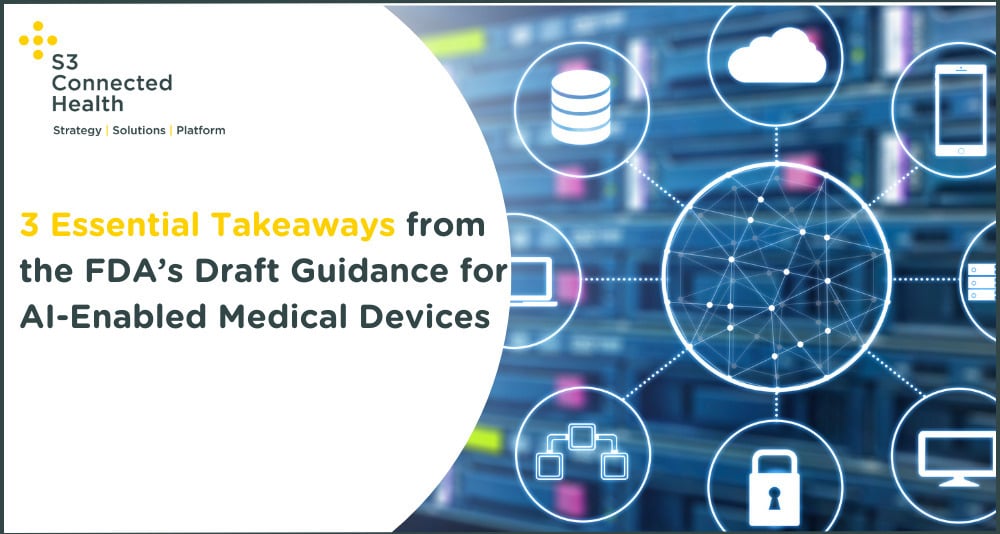The following information is based on a recent article by Bill Betten, Director of Solutions – Medtech at S3 Connected Health. It covers the recent draft guidance provided by the FDA for AI-enabled devices in more detail. The full article — Navigating FDA’s Draft Guidance for AI-Enabled Medical Devices — is on the Medical Device and Diagnostic Industry website.
Following a public meeting by the Digital Health Advisory Committee late last year, the FDA released new draft guidance for AI-enabled medical devices in January 2025. This guidance covers recommendations for the lifecycle management and marketing submissions of AI-enabled medical devices.
The recommendations were published to address key challenges associated with AI in medical devices, such as data collection and preparation, training and validation, evaluation and testing, deployment and integration, and ongoing monitoring. They align with the FDA’s ongoing concerns around ensuring safety, effectiveness, and transparency as technology rapidly evolves.
Below are three of the essential takeaways that medtech companies will need to grapple with as they look to develop such devices.
1. Adopting a total product lifecycle approach (TPLC) is critical
The guidance highlights that a TPLC approach is recommended to address risks around transparency and bias. This approach is particularly critical for those using adaptive systems. It aims to monitor and evaluate real-world performance while identifying and mitigating bias.
2. Data management will be critical for AI-enabled devices
Given the reliance of these devices on data, manufacturers will be required to implement effective tools and processes for data management. The recommendations suggest that a proactive approach will be necessary, and companies will need to treat data as a resource that requires ongoing maintenance. Robust systems will be required to replace some of the existing data management practices to meet what has been outlined in the guidelines.
3. Information to be included in submissions for AI-enabled medical devices
One of the most critical areas covered in the guidance is the outline of the information to be included in submissions to the FDA for AI-enabled medical devices. Much of the information required will be familiar to medtech companies, but it’s critical that teams preparing submissions ensure they’ve included the following information:
- A statement confirming that the device uses AI.
- A description of the device’s inputs (manual or automatic) and outputs.
- An explanation of how AI supports the device’s intended use.
- Details about the intended users, including their characteristics, training level, and required training.
- A description of the intended use environment(s) (e.g., clinical or home setting).
- An outline of the intended workflow for using the device.
- A comparison of the device’s automation level to the current standard of care.
- An explanation of the clinical scenarios for use and how outputs fit into the clinical workflow.
- Details on installation and maintenance procedures.
- Information on calibration or configuration tasks required to maintain performance.
- A description of the AI-enabled device’s user-configurable elements.
- A list of all configurable elements.
- An explanation of how users can adjust these elements and settings.
- An analysis of how these configurations may influence user decision-making.
For a more thorough analysis of the draft guidance, you can read Bill Betten's full article and analysis, Navigating FDA’s Draft Guidance for AI-Enabled Medical Devices, on the Medical Device and Diagnostic Industry website.
If you're curious about what the best practices for data management should like like, our recent whitepaper is available for download. Featuring insights from industry leaders at Cochlear, Dexcom, Medtronic, Omron, Vocxi Health, and S3 Connected Health, the paper offers a practical framework for leveraging data to stay competitive and succeed in a data-driven healthcare landscape.


